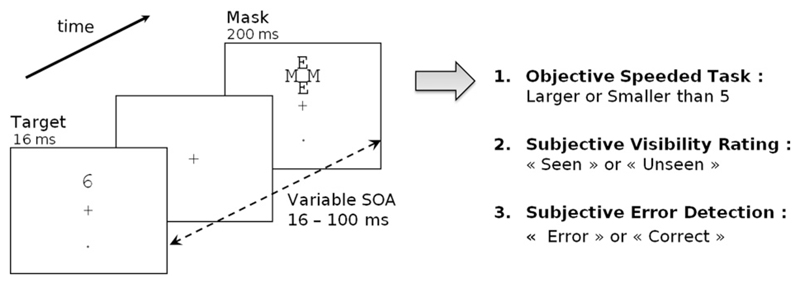Fig. 1.
Experimental design: On each trial, a number was presented for 16 ms at one of two possible locations (top or bottom). It was followed by a mask composed of a fixed array of letters centered on the target location. The delay between target onset and mask onset (SOA) varied randomly across trials (16, 33, 50, 66 or 100 ms). In one sixth of the trials, the mask was presented alone (mask only condition). Participants first performed an objective forced-choice number comparison task where they decided whether the number was smaller or larger than 5. In experiment 1, the response had to be made in less than 550 ms, otherwise a negative sound was emitted. In experiment 2, participants were simply instructed to respond as fast as they could while maintaining accuracy. Then, on each trial, participants performed two subjective tasks. First they evaluated the subjective visibility of the target by choosing between the words “Seen” and “Unseen”, displayed randomly either left or right of fixation. Second, they evaluated their own performance in the primary number comparison task by choosing between the words “Correct” and “Error”, again displayed randomly either left or right.

